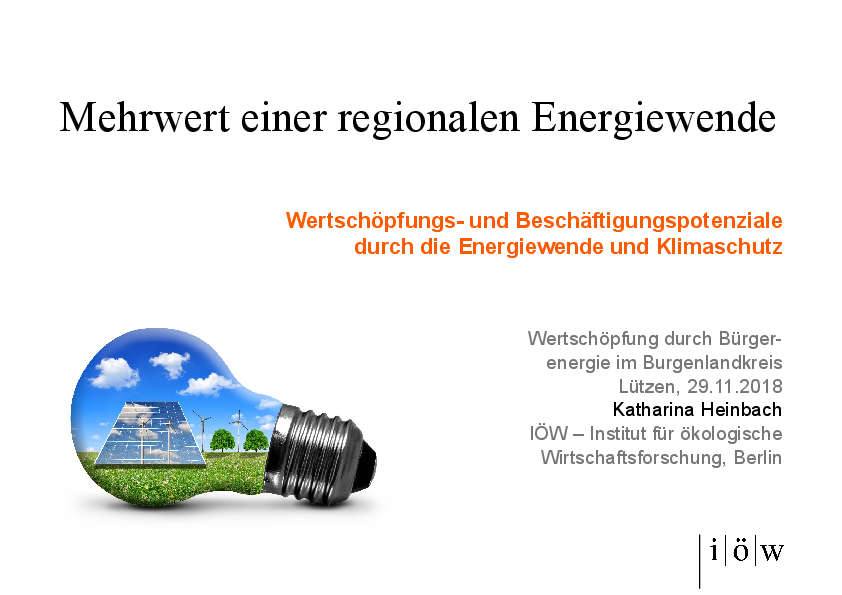Renewable Energy Projects in Lignite Mining Regions
The Climate Action Plan 2050 states that the climate protection goals can only be achieved, if there is a gradual reduction of coal-fired power generation. To ensure a bearable development for the affected lignite mining regions, it is important to consider economic perspectives and employment effects and to point out future perspectives for these regions. The German Federal Ministry for Economic Affairs and Energy (BMWi) commissioned, in consultation with the affected regions, an assessment that identifies potentials of renewable energies in mining areas. The BMWi will also will be responsible for the committee on “development, structural change and regional development” in the legislative term starting in October 2017. Object of the study commissioned by the BMWi were the Rhenisch, the Helmstedter, the Central Germany, and the Lusatian lignite mining areas, i.e. the mining sites and the adjacent districts. A special focus was on the Lusatian case study.
In the detailed case study for the Lusatian mining area, the IÖW firstly assessed the current activities of actors of the economy and of research institutions related to renewable energies and storage technologies within the region. Furthermore, potentials for future energy-related activities were pointed out. Secondly, the IÖW calculated potential regional value-added and employment effects in connection with the future implementation of renewable energy projects and energy storage technologies in Lusatia. On this basis and in cooperation with the project partners, the IÖWs developed recommendations for measures and instruments to ensure the highest possible value added and employment in Lusatia and therefore a successful structural change in this region.
IÖW Project Team
- Katharina Heinbach
- Dr. Steven Salecki




